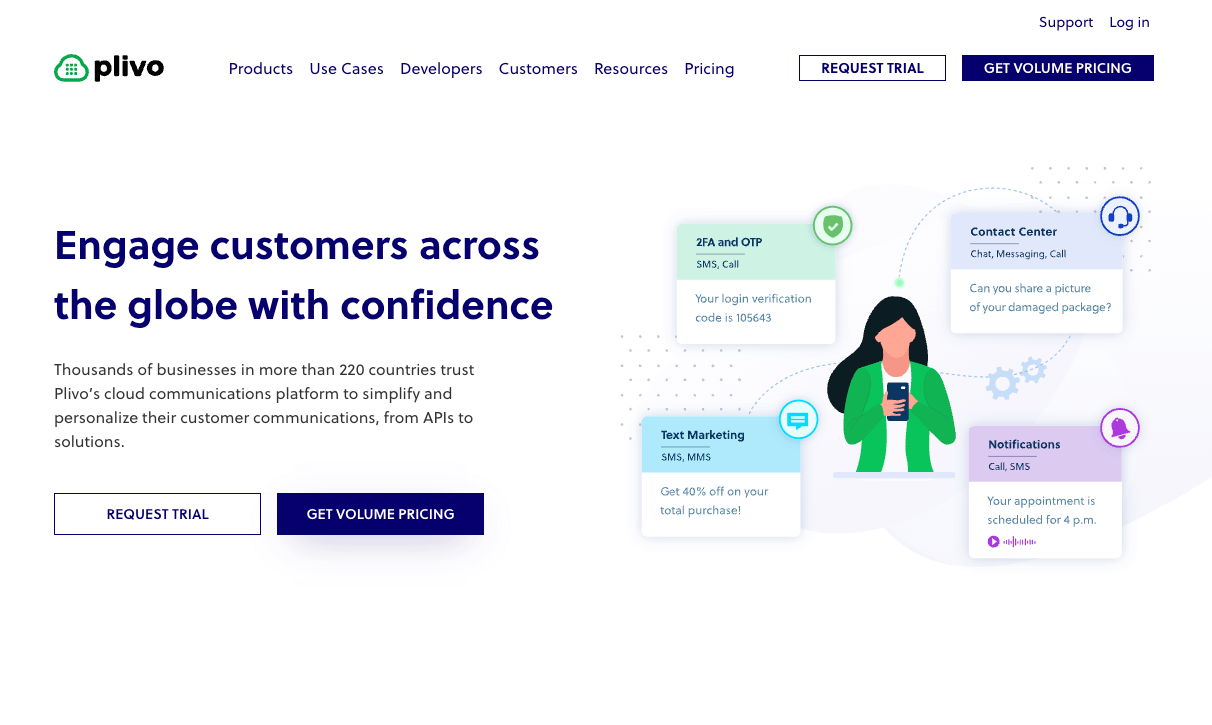Put yourself in the shoes of the average, everyday consumer, and imagine you get two text messages from two different companies. The first message comes from a seemingly random number that you don’t recognize, and the other has a clear sender.
Which one will you ignore or delete? Which one will you open and read? Which one are you more likely to trust?
Sender identification codes (sender IDs for short), help message recipients more easily identify who a message is coming from. When recipients see an ID they recognize, they’re more likely to trust the message they’re receiving and open it.
In short, sender IDs can help you get better results from your SMS campaigns.
Not every country supports sender IDs (more on that below), but in the countries that do, they’re an effective way for businesses to successfully engage with their customers.
In this article, we’ll cover what sender IDs are, why and where businesses should use them, and how they can enhance SMS campaigns.
What are sender IDs?
Sender IDs are alphanumeric identifiers you can use to brand your text messages and show your customers who you are before they tap the message to read it.
Sender IDs can use any combination of numbers and letters up to 11 characters (except in India, which requires exactly six characters) to spell out a brand name, a product, or almost anything you want.
It’s important to note that alphanumeric sender IDs are not available everywhere. In fact, carriers in nearly all of the Western Hemisphere, including the US and Canada, plus China, don’t support alphanumeric sender IDs.
If your SMS campaigns are limited to those areas, you can skip the rest of this article, though we encourage you to learn about Google Verified SMS as an alternative.
If you send messages to customers in Europe, Asia, and Australia, sender IDs can be an important tool for your campaigns.
Why use sender IDs?
Sender IDs can be a critical part of successful SMS campaigns because they help you create trust among your customers, and may lead to greater engagement with your messages.
When you get a message from someone you know, you’re more likely to open and read that message. Customers who have opted in to receiving your messages should recognize your sender ID and associate it with your brand. That’s important in establishing trust and helping to make sure they open future messages.
On the other hand, without a sender ID, you could be diminishing your brand. Customers may not connect your message to your brand, and will almost certainly forget the random number your message comes from. This could make them less likely to open and read your messages in the future.
The upshot is that using sender IDs is an SMS best practice for building brand familiarity with your customers. In some cases, it’s a necessity. Many countries require sender IDs.
Does that mean that if you need to reach customers in the US and Canada, where alphanumeric sender IDs aren’t available, you shouldn’t consider SMS campaigns? Certainly not. No matter where you’re sending text messages, SMS is an effective way to reach customers — but if sender IDs are an option, you should use them.
When should you use sender IDs?
It’s almost always a good idea to use branded sender IDs when running an SMS campaign in which some of the recipients are in countries that support them. Here are some specific use cases where it’s especially important.
Reminders/alerts/notifications
SMS notifications allow businesses to disseminate critical information with reach, immediacy and ease. This is especially important for time-sensitive notifications such as flight changes or appointment reminders. A sender ID helps ensure that recipients recognize the sender as a trusted contact.
Banking/financial
If you’re sending messages for two-factor authentication to allow users to set up accounts, reset passwords, or conduct other private business, you can help customers feel confident they’re being contacted by the right company so they can avoid falling for scams or compromising their private data.
Marketing/promotions
When you’re contacting customers to advise them of an offer, promote a product, or simply to build your brand, sender IDs are critical. Without them, customers may assume your message is a scam, or simply ignore it, even if they opted into your messages.
Ride-hailing/delivery
As with the other examples, SMS campaigns advising of a ride-hailing arrival or order delivery require trust. People want to make sure the entity contacting them, asking them to open their doors, is legitimate.
Customer nurturing
One of the most powerful ways to use SMS is to engage customers after they’ve taken an action or attended an event. A well-placed message can drive customers toward a purchase. Seeing a branded sender ID allows them to instantly make the connection to their previous experience with the brand, and they may be more likely to engage.
Plivo makes sender IDs easy with registration in the console
Rules and practices around sender IDs vary by country, beginning with the registration of the IDs. Some countries require that IDs be preregistered, while others don’t. In countries that do require preregistration, companies need to provide information, and sometimes additional documents, to validate the sender IDs they wish to use. Depending on the country, sender ID validation can take up to two weeks to complete.
Sender IDs need to be registered and maintained separately for each country, which can be a cumbersome process when you want to send messages to multiple countries. However, Plivo’s SMS API simplifies the process by managing all of your registrations from the Plivo console, reusing documents, and tracking progress as you go. You don’t have to manually send documents to each country, and you can track the status of your registration in real time.
To learn more about sender ID registration, read our guide to sender ID registration or talk to one of our experts.
















